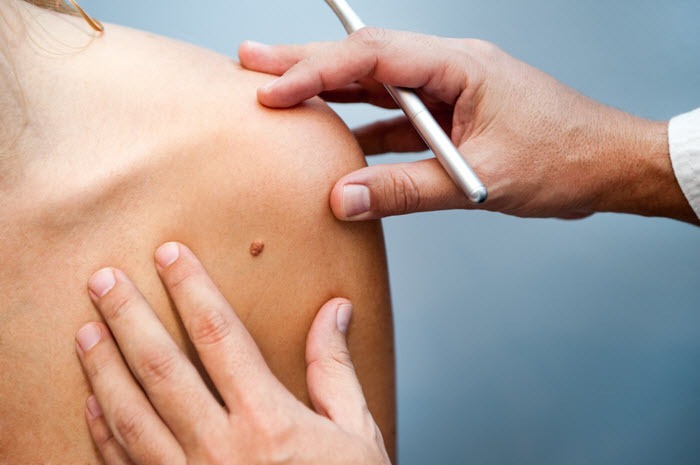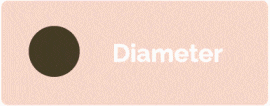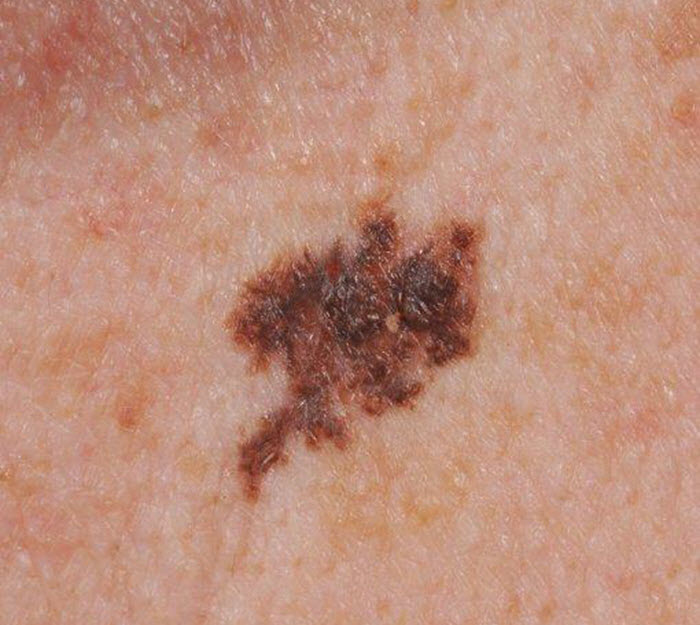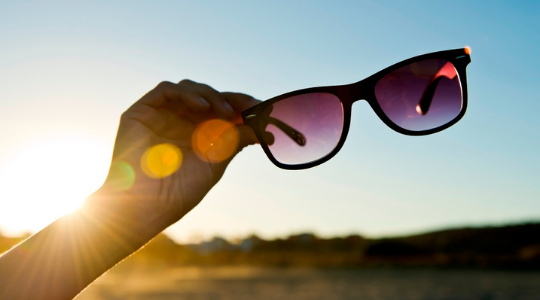
Skin Cancer
Check Your Skin

How to check your skin
Early detection of skin cancer is very important so you should check your skin regularly, ideally once a month. Get someone to help check difficult to see areas, like your back and the backs of your legs. Don’t forget the soles of your feet, between your toes, your scalp, neck and nails.
Always remember, know your skin and know what is normal for you.
Signs and symptoms
Signs and symptoms include a new growth or sore that does not heal in 3-4 weeks. Look for anything that is inflamed, growing, bleeding, crusting, red around the edges, particularly itchy or painful, or changing in any way.
It is normal to have freckles and moles. Most moles develop in childhood and adolescence. If, as an adult, you notice a new mole on your skin or if you notice any changes to an existing mole then get these checked by your GP.
ABCDE Mole Check

The shape of one half is different to the other.

Irregular blurring of border or ragged edge.

Two or more colours: different shades of brown or presence of black, red or blue alongside the mole’s normal colour.

Any change in size

If in doubt get it checked out by your GP.
The Dermatology Photo Triage Pathway supports clinicians identify and treat suspicious moles or skin irregularities.
Rather than referring a patient for an outpatient appointment, digital images are taken in a GP practice and sent directly to a dermatologist, who then decides whether the patient needs further assessment at a hospital.
There are in excess of 50,000 dermatology referrals annually across Northern Ireland.
For more information visit dermatology photo triage
Skin cancer can kill, but if  detected early most skin cancers can be successfully treated. If you are concerned about a skin lesion see your GP who will refer you to a dermatologist if necessary.
detected early most skin cancers can be successfully treated. If you are concerned about a skin lesion see your GP who will refer you to a dermatologist if necessary.
Find out how you can protect your skin and eyes from sun damage.

CARE IN THE SUN
RISK FACTORS
Anyone can develop skin cancer, whatever their skin colour. However, certain skin types are more at risk from the effects of UV radiation than others.
SKIN PROTECTION
Too much ultraviolet (UV) light, either from natural sunlight or from artificial sources such as sunbeds, is the main cause of 80% of skin cancers.
SUNBEDS
Sunbeds, tanning booths and sun lamps give out ultraviolet (UV) rays that can damage your skin and can make it look wrinkled, older or leathery.

